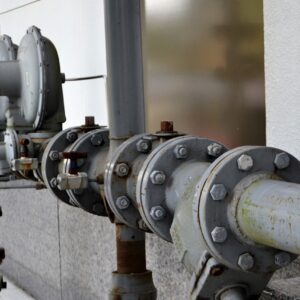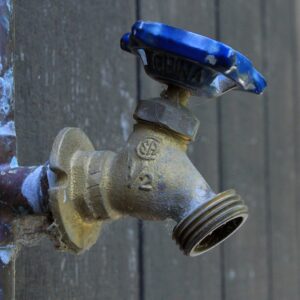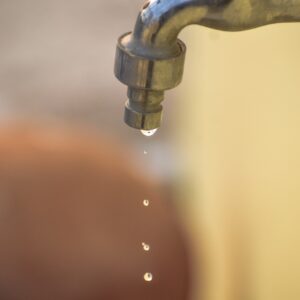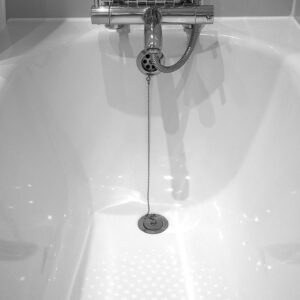Are you concerned about protecting your property from water damage? It’s crucial to choose the right prevention measures to safeguard your home or business. With the right strategies in place, you can minimize the risk of costly repairs and potential health hazards.
In this article, we will guide you through the process of selecting the most effective water damage prevention measures.
First, we’ll help you assess potential risks by identifying vulnerable areas and understanding their susceptibility to water damage.
Next, we’ll explore the various causes of water damage, including leaks, floods, and humidity, so you can address them proactively.
Then, we’ll discuss the importance of implementing proper drainage systems to redirect water away from your property.
Additionally, we’ll explain the significance of installing waterproofing measures to create a barrier against moisture.
Lastly, we’ll emphasize the importance of regular maintenance and inspections to ensure the longevity and effectiveness of your prevention measures.
By following these guidelines, you can make informed decisions and protect your property from water damage.
Assessing Potential Risks
Assessing the potential risks involves identifying areas of vulnerability and determining the likelihood of water damage occurrence.
Start by inspecting your home and looking for signs of water damage, such as leaks, damp spots, or discoloration on walls and ceilings.
Pay special attention to areas prone to water intrusion, like basements, attics, and crawl spaces.
Check the condition of your roof and gutters, making sure they’re free of debris and properly functioning.
Evaluate the grading around your property, ensuring water flows away from the foundation.
Consider the climate and weather patterns in your area, as heavy rainfall or flooding can increase the risk of water damage.
Additionally, take into account any nearby bodies of water or potential sources of water that could pose a threat.
By thoroughly assessing the potential risks, you can make informed decisions on appropriate water damage prevention measures.
Understanding Water Damage Causes
Understanding the causes of water damage can help you take proactive steps to prevent it. Water damage can occur due to various reasons, such as plumbing issues, leaks, floods, or natural disasters. Faulty plumbing systems, including burst pipes or leaking faucets, are common culprits that can lead to significant damage if not addressed promptly.
Poorly maintained roofs or inadequate drainage systems can also contribute to water damage, especially during heavy rainfall. Additionally, floods caused by heavy rain or overflowing rivers can result in extensive water damage to your property.
Understanding these causes allows you to identify potential risks and implement preventive measures. Regularly inspecting and maintaining your plumbing system, ensuring proper roof maintenance, and installing adequate drainage systems are some effective ways to prevent water damage and protect your property.
Implementing Proper Drainage Systems
To effectively protect your property from potential water damage, it’s crucial that you prioritize the implementation of proper drainage systems. By ensuring that water is directed away from your home or building, you can significantly reduce the risk of water infiltration and subsequent damage.
Start by inspecting your gutters and downspouts, making sure they’re clear of debris and properly connected. Consider installing gutter guards to prevent clogs and ensure smooth water flow.
Additionally, evaluate the grading around your property. The ground should slope away from your home to prevent water from pooling near the foundation. If necessary, regrade the soil or install French drains to redirect water away.

Lastly, consider installing a sump pump in your basement or crawl space to prevent water accumulation during heavy rains.
Taking these measures will help keep your property safe and dry.
Installing Waterproofing Measures
Installing waterproofing measures will help create a fortress-like barrier against potential water infiltration, ensuring your property remains dry and protected.
There are various options available for waterproofing, depending on the specific needs of your property.
One option is to apply a waterproofing sealant to the exterior walls and foundation. This sealant acts as a protective layer, preventing water from seeping through the walls.
Additionally, installing a drainage system, such as a sump pump or French drain, can help redirect water away from your property’s foundation.
Another effective measure is installing a waterproof membrane on the roof to prevent leaks during heavy rain or snowfall.
Lastly, don’t forget to inspect and maintain your gutters and downspouts regularly to ensure proper water flow and prevent water damage.
Regular Maintenance and Inspections
Make sure you regularly inspect and maintain your property to keep it in top shape and prevent any potential issues. Regular maintenance and inspections are crucial in preventing water damage and ensuring the effectiveness of your waterproofing measures.
Start by examining the exterior of your property, checking for any cracks or gaps in the foundation, walls, or roof. These openings can allow water to seep in and cause damage.
Inspect your gutters and downspouts, clearing any debris and ensuring they’re directing water away from your property.
Inside, regularly check for any signs of water damage, such as discoloration, mold growth, or musty odors. Fix any leaks or plumbing issues promptly.
Additionally, consider scheduling annual professional inspections to identify any potential problems and address them before they become major issues.
By staying proactive with maintenance and inspections, you can safeguard your property against water damage.
Conclusion
So there you have it! By assessing potential risks and understanding water damage causes, implementing proper drainage systems and installing waterproofing measures, and conducting regular maintenance and inspections, you can effectively prevent water damage in your home or business. Remember to stay proactive and take the necessary steps to protect your property. With the right prevention measures in place, you can save yourself the hassle and expense of dealing with water damage in the future. So don’t wait, start implementing these measures today!




